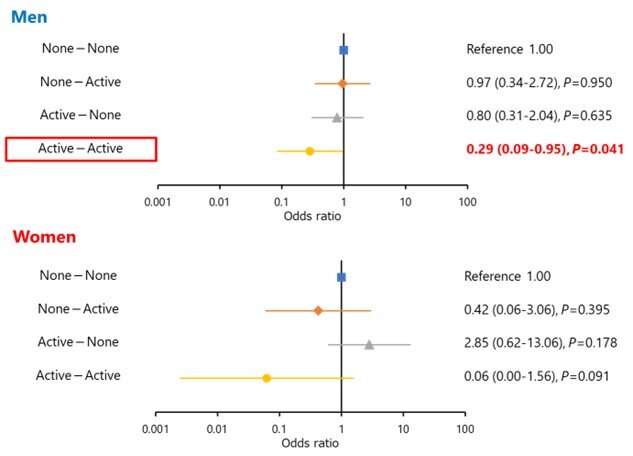Investigating the effect of exercise habits in adolescence and midlife on the risk of sarcopenia in older age

by Juntendo University Research Promotion Center
Muscle function typically improves during adolescence and deteriorates with age. Sarcopenia is one such type of muscle weakening, caused primarily by the natural aging process. As compared to other ethnicities, Asians with a relatively low body mass index (BMI) are more likely to develop sarcopenia as they grow older. The condition significantly impacts their quality of life, and thus, it is crucial to have strategies that prevent its onset.
"Preventing sarcopenia is an important strategy for preventing disability and the need for long-term care in the older age. By establishing the association, we can move one step closer to reducing risk factors of sarcopenia in older Japanese adults," says Prof. Tamura.
The team assessed the exercise habits of 1,607 community-dwelling Japanese adults with comprised 679 males and 928 females aged 65–84, as part of the "Bunkyo Health Study." The participants underwent a complete health examination, including measurements of skeletal muscle index, handgrip strength, and gait speed.

They were further divided into four groups based on their exercise habits in adolescence and older age: no exercise in either period, exercise only in adolescence, exercise only in older age, and exercise in both periods. Multivariate-adjusted logistic regression models were used to estimate the odds ratios (ORs) for the prevalence of sarcopenia in each group. Low muscle performance was defined as low muscle strength and/or low gait speed.
Of the total participants, 6.6% of the men and 1.7% of the women had sarcopenia. Low muscle mass was prevalent in 14.3% of the men and 5.2% of the women, while low muscle performance was recorded in 25.6% of the men and 19.6% of the women.
In men, the ORs for sarcopenia, low muscle mass, and low muscle performance were significantly lower in the group that exercised during adolescence and older age. In contrast, in women, the OR for low muscle performance was significantly lower in those who exercised during their adolescence and older age.
The study indicated that older men who exercised in their adolescence and older age were at a lower risk of sarcopenia and had better muscle mass and muscle performance. In contrast, older women with exercise habits during these phases of their lives were at a lower risk of poor muscle performance.

"We would like to emphasize that exercising not only during old age but also during adolescence, i.e., junior and high school, may influence the maintenance of skeletal muscle function in old age," explains Prof. Tamura.
It is concerning that in Japan, the rate of exercise implementation has been shown to be highest during junior high school and then rapidly decreases with age. So, how do we address this problem?
Prof. Tamura responds, "By creating the awareness that inculcating the habit of exercising during adolescence, people can prevent several problems in their older ages. In the long run, exercising during adolescence has the potential to improve the quality of life of the older adults by providing maintenance of their skeletal muscle function."
More information: Hiroki Tabata et al, Effects of exercise habits in adolescence and older age on sarcopenia risk in older adults: the Bunkyo Health Study, Journal of Cachexia, Sarcopenia and Muscle (2023). DOI: 10.1002/jcsm.13218










